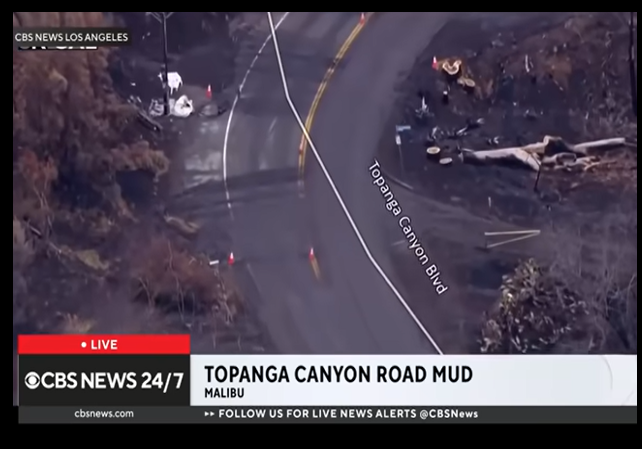Winter Storm Essentially Extinguishes Greater Los Angeles Wildfires

A winter storm hit southern California, extinguishing most of the wildfires in the Greater Los Angeles area.
Though “mudslide” season has officially started, these rains were much-needed for fire suppression and caused only a few road closures and minor traffic incidents.
A weekend storm in Los Angeles helped tamp down the most damaging wildfires in California history, but it also brought flooding and mudslides that have shut down highways and schools and left emergency vehicles stuck in the mud.The first significant rainfall in months doused Los Angeles city and county, with more than an inch of rain falling on parts of the northern hills in and around the burn zones.But the area’s scorched, ash-covered soil then washed down the hillsides, covering roadways in mud and leaving helpless drivers — including those in emergency vehicles — trapped.At least one fire truck battling the Palisades Fire had to be rescued from the muck, a video from Fox Weather shows, and emergency crews were forced to use a bulldozer to dig out four vehicles trapped on a highway in Woodland Hills just north of the fire.
Presently, the three major conflagrations that we reported on (Palisades, Eaton, and Hughes Fires) are all well over 90% contained. These fires are truly historic:
- At least 28 people have lost their lives due to the wildfires.
- More than 200,000 people were forced to evacuate their homes.
- Over 16,000 structures have been affected, either damaged or destroyed.
The estimated total economic loss from the blazes has ballooned to more than $250 billion, making it one of the most costly natural disasters in U.S. history.
The combined area impacted by the Palisades, Eaton, and Hurst fires totals approximately 62 square miles, which is larger than the city of San Francisco.
The Eaton Fire has become the most lethal and destructive wildfire in the history of southern California, followed closely by the Palisades Fire as the second most devastating. The Hughes Fire had the potential to go “nuclear”, but a quick-fire response paired with a break in the weather stopped a bad situation from becoming worse.
The following summarize key developments in the ongoing recovery and investigation efforts:
US Army Corp of Engineers to the Rescue
Residents are dealing with the burdens of clearing debris, and as in North Carolina, the US Army Corps of Engineers are heading to the rescue, as explained in a recent townhall for Palisades residents.
Rep. Brad Sherman (D-Sherman Oaks) and other elected officials responded to dozens of audience questions. Federal and county representatives described the blaze’s effects on house foundations, soil and trees, and the rebuilding process.Sherman revealed that the average cost of debris removal for homes from another recent fire was $170,000 — a potential factor for residents who are looking to hire a private contractor to clear their lots.The U.S. Army Corps of Engineers is offering to clear away the debris at no charge. Residents can opt in or out of the government service…The Environmental Protection Agency is also doing its own removal of hazardous items, which will start later this week. Tara Fitzgerald, the agency’s coordinator, told the crowd Sunday night that the process would take “months.”That answer drew some complaints from audience members.
Clearly, the EPA is less than helpful. Maybe the actual usefulness of the agency should be reevaluated.
Los Angeles will get seriously red-pilled by the EPA rules, meaning a delay of 18 months in clearing the lots for reconstruction.
Powerlines Surged in Eaton Area Before Fire Began
An evaluation of records indicates a surge in the powerlines shortly before the wildfire.
Four Southern California Edison lines over Eaton Canyon saw a momentary increase of electrical current at about the same time the destructive Eaton fire is believed to have ignited on Jan. 7, the utility company told state regulators in a filing Monday.The incident, according to the filing, happened after Edison’s Eagle-Rock-Gould line — located about five miles away from the suspected start of the fire — experienced a fault, sending the increase of current across the company’s transmission system.
Hopefully, President Donald Trump will install a “handler” for California, allowing rebuilding and recovery efforts to continue without needless delays.
Meanwhile, let’s hope the rebuilding plans contain blueprints for water infrastructure projects useful to this fire prone region. Until then, Angelenos will endure “mudslide season”.
.
CLICK HERE FOR FULL VERSION OF THIS STORY